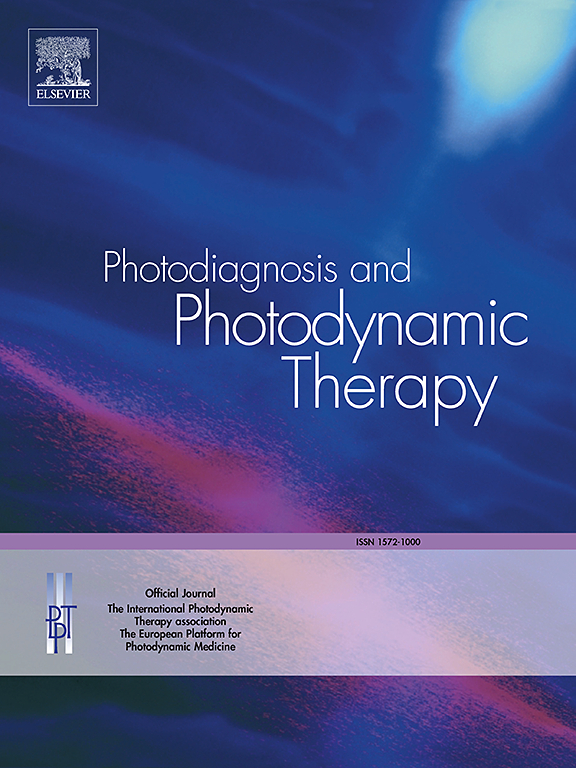Optical coherence tomography (OCT) and optical coherence tomography angiography (OCTA) for assessing thyroid-associated ophthalmopathy activity
IF 2.6
3区 医学
Q2 ONCOLOGY
引用次数: 0
Abstract
Purpose
To explore the role of retinal and choroidal parameters obtained via optical coherence tomography (OCT) and optical coherence tomography angiography (OCTA) in predicting thyroid-associated ophthalmopathy (TAO) activity, providing a scientific basis for improved clinical diagnosis and treatment.
Method
This study included 90 active TAO patients (178 eyes), 69 inactive TAO patients (138 eyes), and 66 healthy individuals (132 eyes). It compared choroidal and retinal parameters and magnetic resonance imaging structural differences, analyzed correlations between these parameters, and developed a predictive model for TAO activity.
Results
Compared to control and inactive groups, active group had thicker subfoveal choroidal thickness (SFCT) and reduced luminal area, stromal area, and total choroidal area. Active group showed reduced vessel density in the foveal and nasal regions versus inactive group, and in the foveal, superior, and nasal regions versus controls. Foveal avascular zone (FAZ) area was larger in active group than in both control and inactive groups. Active group also had larger inner diameters and signal intensity ratio (SIR) of the extraocular muscles than inactive group. SFCT correlated with proptosis, and FAZ correlated with proptosis, maximum extraocular muscle diameter, and SIR. The multivariate model achieved area under the curve values of 0.836 in overall TAO population and 0.855 in hyperlipidemia subgroup, outperforming the univariate model.
Conclusion
Retinal and choroidal parameters, obtained via OCT/OCTA, are keys to developing TAO activity predictive models, with enhanced accuracy in TAO patients with hyperlipidemia.
光学相干断层扫描(OCT)和光学相干断层扫描血管造影(OCTA)评估甲状腺相关眼病活动性。
目的:探讨通过光学相干断层扫描(OCT)和光学相干断层扫描血管造影(OCTA)获得的视网膜和脉络膜参数在预测甲状腺相关性眼病(TAO)活动性中的作用,为改进临床诊断和治疗提供科学依据。方法:本研究纳入活动性TAO患者90例(178眼)、非活动性TAO患者69例(138眼)和健康人66例(132眼)。比较脉络膜和视网膜参数与磁共振成像结构差异,分析这些参数之间的相关性,建立TAO活性预测模型。结果:与对照组和不活动组相比,活动组中央凹下脉络膜厚度(SFCT)增厚,管腔面积、间质面积和总脉络膜面积减少。与不活动组相比,活动组显示中央凹和鼻区血管密度降低,并且与对照组相比,活动组的中央凹、上、鼻区血管密度降低。运动组中央凹无血管区面积均大于对照组和不运动组。运动组眼外肌内径和信号强度比(SIR)均大于不运动组。SFCT与眼球突出相关,FAZ与眼球突出、最大眼外肌直径、SIR相关。多元模型在TAO总体人群曲线下面积为0.836,高脂血症亚组曲线下面积为0.855,优于单变量模型。结论:通过OCT/OCTA获得的视网膜和脉络膜参数是建立TAO活性预测模型的关键,在TAO合并高脂血症患者中准确性更高。
本文章由计算机程序翻译,如有差异,请以英文原文为准。
求助全文
约1分钟内获得全文
求助全文
来源期刊

Photodiagnosis and Photodynamic Therapy
ONCOLOGY-
CiteScore
5.80
自引率
24.20%
发文量
509
审稿时长
50 days
期刊介绍:
Photodiagnosis and Photodynamic Therapy is an international journal for the dissemination of scientific knowledge and clinical developments of Photodiagnosis and Photodynamic Therapy in all medical specialties. The journal publishes original articles, review articles, case presentations, "how-to-do-it" articles, Letters to the Editor, short communications and relevant images with short descriptions. All submitted material is subject to a strict peer-review process.
 求助内容:
求助内容: 应助结果提醒方式:
应助结果提醒方式:


